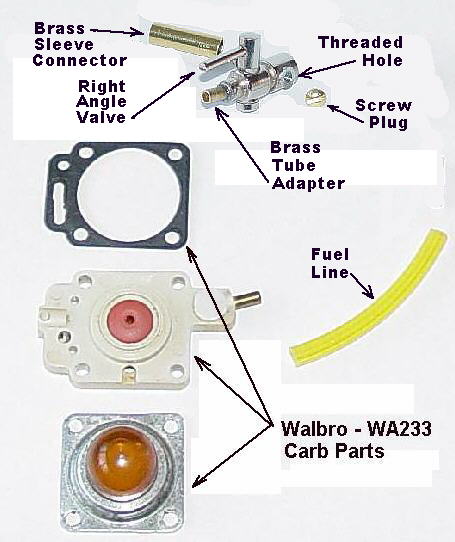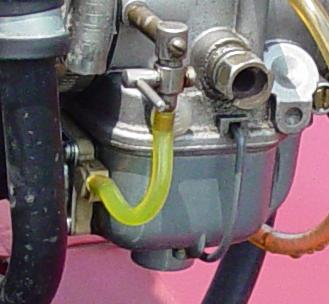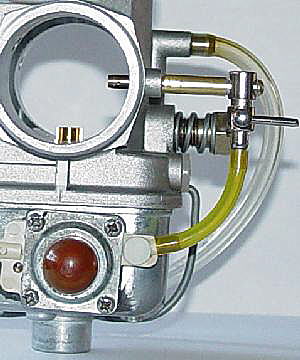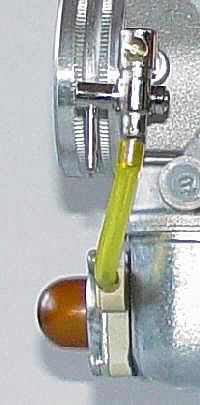|
|
|
Since I must go to the propeller end of the engine to remove starter and ignition system safety devices, I wanted to be able to prime the engine at the same time. Also, as the FireFly is close to the weight limit, it was important to minimize system weight. I started with a primer pump from a discarded weed wacker engine carburetor. This pump is mounted onto the side and draws gasoline directly from the Bing float bowl. The fuel is pumped through a small tube, and up through an open stop cock valve that is attached to the Bing primer port. This valve is closed after priming to prevent additional fuel flow after engine start up. Before one starts the engine, the fuel removed from the carburetor bowl is replenished with the fuel system squeeze bulb. Before engine start and removing the FireFly from the hangar, I open the valve, squeeze the primer bulb two or three times depending on outside temperature, close the valve, and by hand pull the engine through two compressions followed by rotating the propeller backwards to bring the piston up against compression. This lets the starter get a run before for the crank comes up on compression. By doing all of this before removing the FireFly from the hangar, the fuel is well voliatized in the case. After donning my flying gear and getting into the cockpit, the enrichment jet is opened and the throttle is closed. Upon engaging the starter the engine starts on the first or second turn. |
 A double air pot metal stop cock valve was purchased from an aquarium shop. The extra valve was removed. The hole that lead to the second valve was tapped 4-40 Thd and plugged with a short brass screw. Hose barbs were shortened to reasonable lengths. To adapt to primer tubing size, one barb was drilled to accept a piece of brass tubing. The remaining barb OD was filed so that it would fit inside a brass tube connector sleeve. JBWeld was used to hold all the parts in place. All extra material was removed from the Walbro carburetor parts. Also the gasket was cut so that fuel could be drawn from a lower location on the float bowl. JBWeld was used to make a flat mounting surface on the float bowl and to seal the threaded holes on the inside of the float bowl.
A double air pot metal stop cock valve was purchased from an aquarium shop. The extra valve was removed. The hole that lead to the second valve was tapped 4-40 Thd and plugged with a short brass screw. Hose barbs were shortened to reasonable lengths. To adapt to primer tubing size, one barb was drilled to accept a piece of brass tubing. The remaining barb OD was filed so that it would fit inside a brass tube connector sleeve. JBWeld was used to hold all the parts in place. All extra material was removed from the Walbro carburetor parts. Also the gasket was cut so that fuel could be drawn from a lower location on the float bowl. JBWeld was used to make a flat mounting surface on the float bowl and to seal the threaded holes on the inside of the float bowl.
|

The tubing as shown above was too short. As the tubing aged the elastiizers leached out of the plastic so that it shortened and pulled off the hose barbs. To over come this problem a longer piece was cut and installed. |

 During cold weather and using a small battery, it is very important that the engine starts on the first or second time over. A primer can be a big help in starting a very cold engine.
During cold weather and using a small battery, it is very important that the engine starts on the first or second time over. A primer can be a big help in starting a very cold engine.